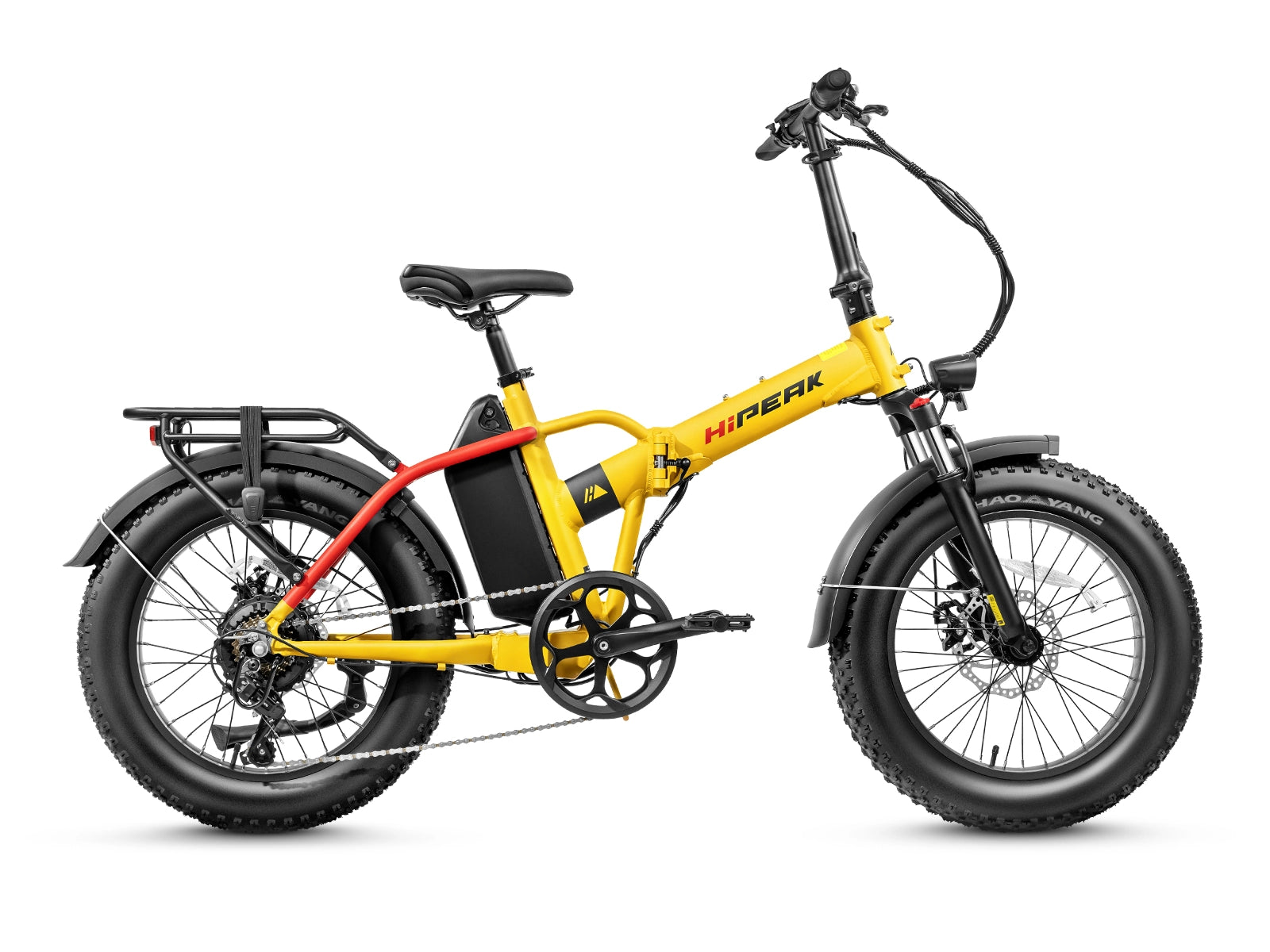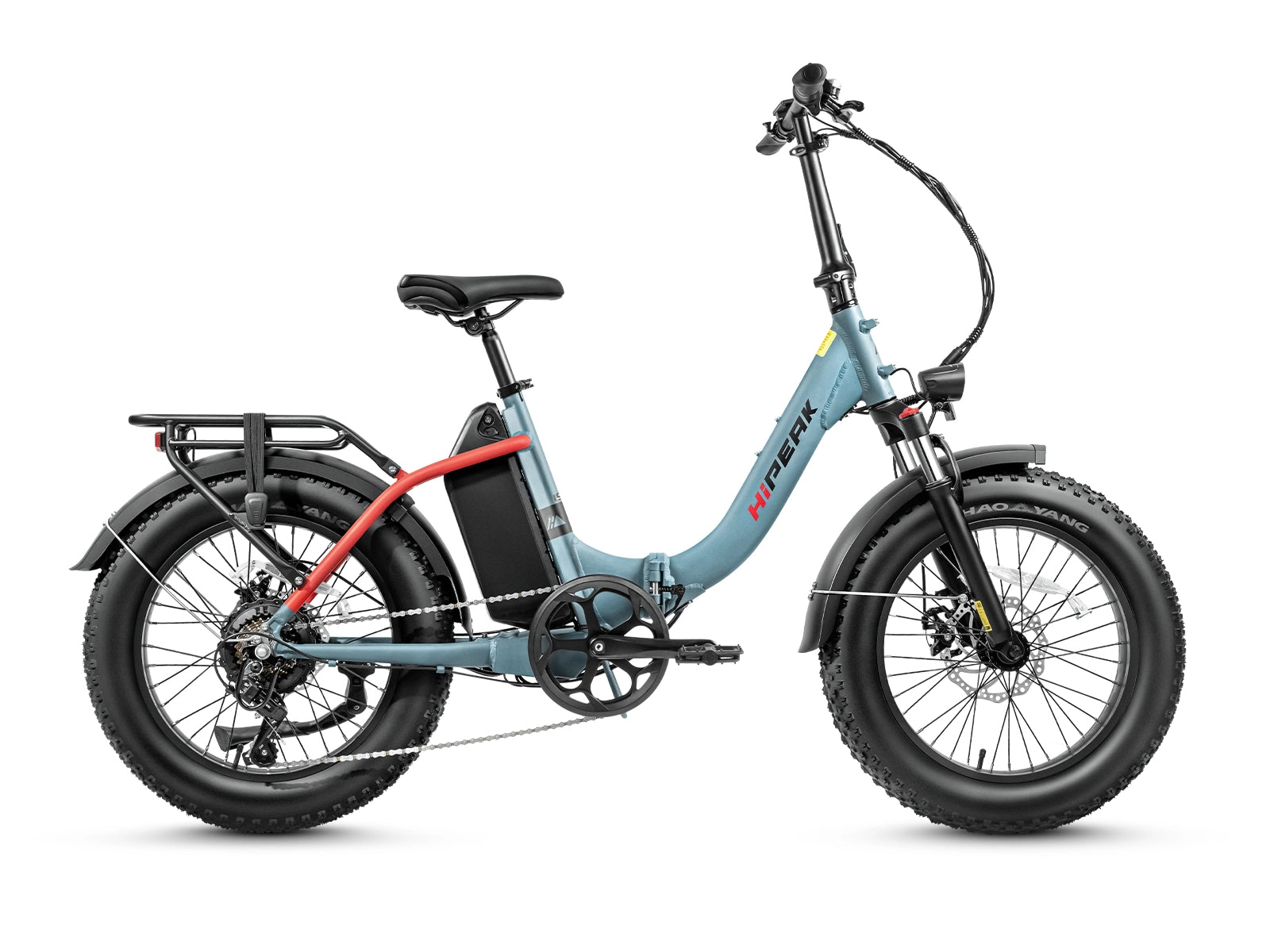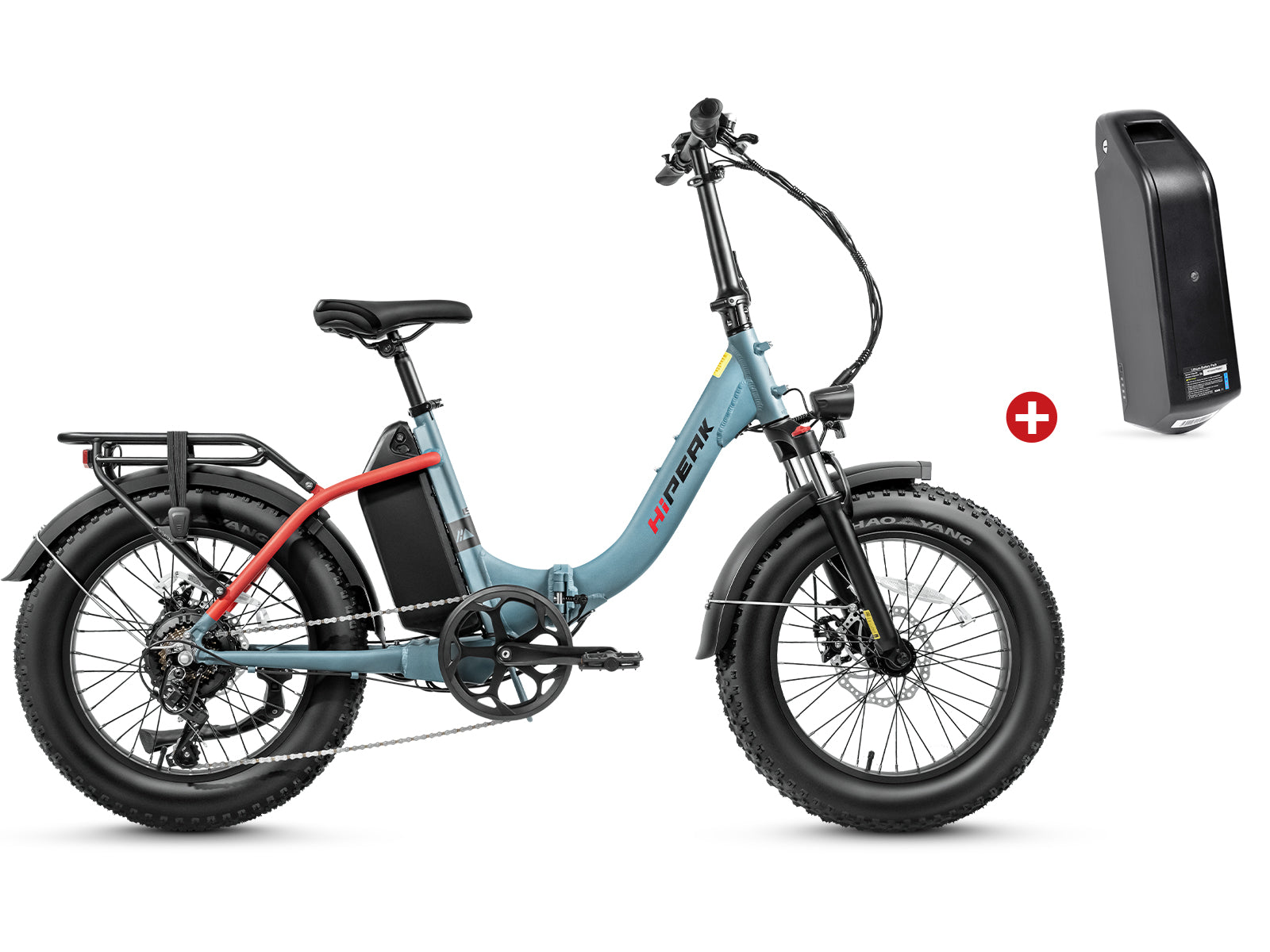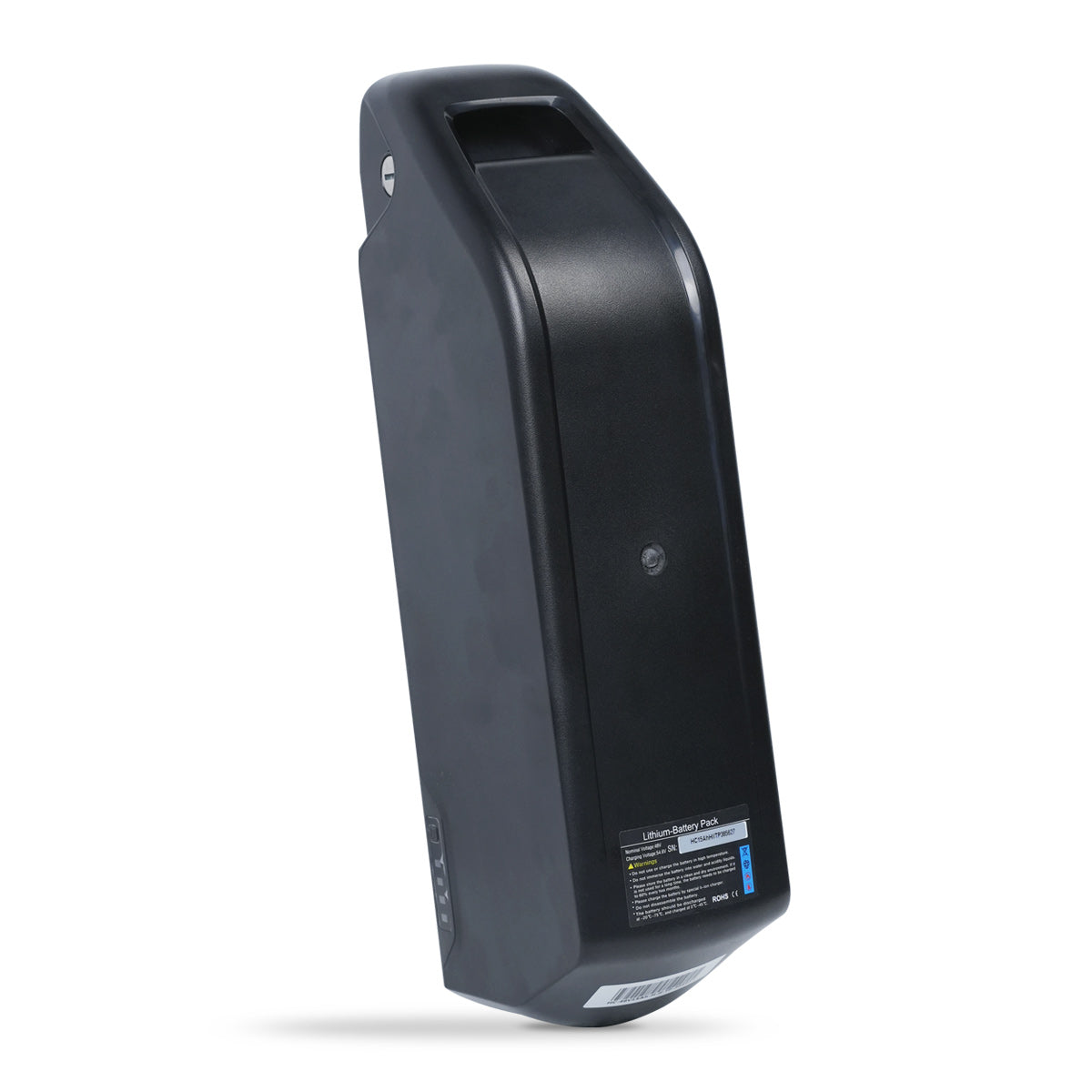Electric Bikes Are a Greener Way to Reduce Emissions

As the world becomes more environmentally conscious, the search for more sustainable modes of transportation has become a pressing issue. One solution that has emerged in recent years is the electric bicycle or e-bike. E-bikes are bicycles equipped with an electric motor that assists when pedaling. They offer a greener alternative to traditional modes of transportation and can help reduce emissions. But what exactly are electric bikes, and how do they work? In this guide, we'll explore the world of electric bikes and learn how they can help reduce emissions.
What Are Electric Bikes?
Electric bikes, or e-bikes for short, are bicycles equipped with a motor and battery that assist with pedaling. They are designed to be more efficient and comfortable than traditional bikes, allowing riders to travel further with less effort. The motor and battery work together to provide pedal assist, meaning the rider still has to pedal, but the motor assists with the effort.
E-bikes come in various styles, from mountain bikes to urban cruisers. They are often equipped with features such as headlights, taillights, and fenders for added safety and convenience. Many e-bikes also come with a range of adjustable settings, allowing riders to customize the motor's level of assistance.
How Do Electric Bikes Work?
Electric bikes use a motor and battery to provide pedal assist. The motor is typically located in the rear hub or the bottom bracket. It works by providing power to the pedals as the rider pedals. The battery provides power to the motor, typically mounted on the bike's frame.
The motor's assistance depends on the level the rider selects. Most e-bikes come with several different levels of assistance, ranging from low to high. Riders can select the level that best suits their needs, allowing them to conserve battery power when traveling on flat terrain and use more assistance when climbing hills or traveling long distances.
One of the main benefits of e-bikes is that they allow riders to travel further and with less effort than traditional bikes. This makes them an ideal choice for commuting or leisurely rides. Riders can cover more ground quickly and feel more relaxed at their destination.
What Are Emissions?
Before delving into how electric bikes reduce emissions, it's important to understand what emissions are and why they matter. Emissions refer to the gases and particles released into the air due to human activities, such as burning fossil fuels for energy or transportation. The most common emissions are carbon dioxide (CO2), a greenhouse gas contributing to climate change, and nitrogen oxides (NOx), which can lead to air pollution and health problems such as asthma and lung cancer. Emissions are a major environmental issue, and reducing them is essential to protecting the health of our planet and its inhabitants.
How Do Electric Bikes Reduce Emissions?
Electric bikes are quickly gaining popularity worldwide, and for a good reason. They offer a sustainable and eco-friendly way to travel while providing the convenience and flexibility of traditional bicycles. They offer several benefits when it comes to reducing emissions:
They Don't Emit CO2
Electric bikes don't emit CO2 because they rely on electricity instead of fossil fuels. The electricity used to power e-bikes can come from various sources, including renewable sources such as solar or wind power. Even when the electricity comes from non-renewable sources, such as coal or natural gas, e-bikes still emit far less CO2 than traditional cars or motorcycles. According to a European Cyclists' Federation study, electric bikes emit between 8 and 22 grams of CO2 per kilometer traveled, compared to 271 grams for an average car.
They Reduce Reliance on Cars
Another way that e-bikes reduce emissions is by reducing the number of cars on the road. Many people use cars for short trips, such as commuting to work or running errands, even though these trips could easily be made on a bicycle. By providing a faster and more convenient option than traditional bicycles, e-bikes encourage people to choose two wheels instead of four. This not only reduces emissions from individual cars but also reduces congestion on the roads, which can further reduce emissions from idling cars.
They Encourage Cycling
In addition to reducing reliance on cars, e-bikes also encourage cycling in general. Because they offer assistance with pedaling, e-bikes make cycling more accessible to people who might not otherwise be able to ride a traditional bicycle, such as older adults or people with disabilities. This means more people can experience the health and environmental benefits, leading to more investment in cycling infrastructure and support for sustainable transportation policies.
They're Efficient
Electric bikes are also more energy-efficient than traditional cars or motorcycles. Because they don't require gasoline or diesel fuel, they use less energy overall. In addition, e-bikes can be charged using renewable energy sources, reducing their carbon footprint. According to the same European Cyclists' Federation study, e-bikes use between 5 and 15 watt-hours per kilometer, compared to 60 to 150 watt-hours for an average car.
They Can Be Shared
Finally, electric bikes can also be part of shared transportation systems, reducing emissions. Bike-sharing programs, which allow people to rent bikes for short trips, have become increasingly popular in many cities worldwide. By including e-bikes in these programs, more people can access sustainable transportation options, reducing the need for individual car ownership and decreasing emissions from personal vehicles. Shared e-bikes can also help to reduce traffic congestion, making cities more livable and environmentally friendly.
Number of E-Bikes in the US
Electric bicycles are becoming increasingly popular in the US. According to the Electric Bike Association, approximately 300,000 e-bikes were sold in the US in 2019. The number of e-bikes sold in the US is expected to grow by 50% annually, reaching an estimated 1.5 million units sold by 2025. This increase in e-bike sales reflects the growing awareness of the need for sustainable transportation options.
More Advanced Concept of Emission Reduction
E-bikes offer a more advanced concept of emission reduction. They are powered by electricity, a much cleaner energy source than fossil fuels. Using electric bikes reduces the amount of carbon dioxide (CO2) emitted into the atmosphere. An e-bike can save up to 22 pounds of CO2 emissions per 100 miles traveled. This reduction in emissions is equivalent to the amount of CO2 a car would produce if it traveled the same distance.
Greenest Electric Bicycle (Folding Electric Bicycle)
The folding electric bicycle is one of the greenest electric bicycles on the market. Folding e-bikes are designed for easy storage and transportation, making them ideal for commuters who need to take public transportation or store their bike in a small space. The folding e-bike is also an excellent choice for people who live in urban areas, as it can easily navigate through traffic and crowded streets.
The folding e-bike has a lithium-ion battery that provides power to the electric motor. The battery can be charged using a standard household outlet, providing up to 40 miles of assistance on a single charge. The folding e-bike also has a top speed of 20 miles per hour, making it a practical and efficient mode of transportation.
What Kinds of Travel Can Electric Bicycles Meet?
Electric bikes are a versatile mode of transportation and can be used for various kinds of travel. Here are some examples of the types of travel that e-bikes are suitable for:
Commuting
One of the most common uses of e-bikes is commuting to work or school. E-bikes are a great way to avoid traffic congestion. They are much faster than walking or cycling without electric assistance. Commuting on an e-bike is also an excellent way to exercise in your daily routine without wasting too much time.
Errands
E-bikes are perfect for running errands around town. They are ideal for short trips to the grocery store, the bank, or the post office. E-bikes are also great for picking up kids from school or daycare, as they are easy to park and can be ridden on bike paths.
Leisure
E-bikes are also great for leisure activities such as cycling around parks, beaches, or other scenic areas. They are an excellent way to explore new places, get fresh air, exercise, and enjoy the outdoors.
Mountain Biking
Mountain biking is another type of travel that e-bikes are suitable for. The electric motor makes it easier to climb hills and navigate rough terrain, making e-bikes an excellent choice for mountain biking enthusiasts.
Conclusion
Electric bicycles are a green alternative to traditional modes of transportation. They offer an efficient and sustainable way to reduce emissions while providing a practical means of transportation. The popularity of e-bikes is on the rise and is expected to grow in the coming years.
Whether commuting, running errands, or just enjoying a leisurely ride, e-bikes offer a fun and environmentally friendly travel method. With technological advancements, electric bicycles are becoming more accessible and affordable, making it easier to reduce your carbon footprint while enjoying the benefits of cycling.





















Leave a comment